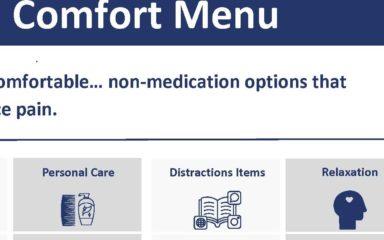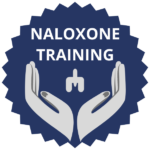
There is no ‘one-size-fits-all’ approach for pain management. However, effective pain management is essential in improving patients’ quality of life and promoting better health outcomes.
Untreated or poorly managed pain can lead to chronic pain, reduced mobility, decreased quality of life and mental health issues, such as anxiety and depression. Proper pain management can help prevent complications, reduce hospital stays and readmissions and optimize patient outcomes. Additionally, pain management techniques can reduce healthcare costs associated with prolonged hospital stays and the use of unnecessary diagnostic tests and treatments. Also, often opioids prescribed for pain management can lead to misuse and addiction.
Great Plains QIN recently developed a Pain Management suite of tools. The tools include a Pain Comfort Menu, an Acute Pain Relief Pad and training to help with administration of Naloxone in the event of an opioid overdose. You can access these tools on our Web site or click on the images below.
|
Pain Comfort Menu USE WITH/FOR PATIENTS/RESIDENTS |
Enables patients to work together with the health care team to reach individual comfort goals and give patients more control regarding management of pain.
A patient can look over the menu and let their care team know what options for pain management they would like to try. The menu has four main categories: comfort, personal care, distraction items and relaxation. Each category serves its own unique purpose depending on how the patient is feeling throughout their stay. Keeping patients comfortable doesn’t always mean focusing on pain medication. Sometimes it means addressing simple hygiene needs, like hand lotion or a nail file. Other times patients may prefer to stretch, play a game, take a walk, a warm blanket or a cool washcloth. Relaxation options are offered, including music, aromatherapy, massage and simply pulling the shades down. In addition, the comfort menu lists medication options for pain relief, including alternatives to opioid medications. |
| Pain Self-Management
USE AS PROVIDERS |
This pain relief pad is to help track administering of pain relief that does NOT include an opioid medication. This can be used to remind patients that opioid use for acute pain can cause side effects and even more serious harm or death; as opioids have a risk for addiction and misuse. Because opioids can be addictive, we need to be very judicious with how they are used during treatment.
This form be completed online or printed.
|
|
Naloxone Training USE FOR ANYONE WHO NEEDS NALOXONE TRAINING |
Training video (20 minutes) that can be shared with your clinical and non-clinical staff to provide a better understanding on Naloxone use and administration.
Opioids are often prescribed for pain management. Unfortunately, we are in the midst of an opioid epidemic. The reasons for this are complex, but there is a simple element of truth – we can all help to save a life of a family member or a complete stranger by better understanding how Naloxone works and how to administer it. The training video covers signs and symptoms of an overdose, three different administration techniques and how to place an individual in the recovery position. The video also covers the Good Samaritan Laws in North Dakota and South Dakota. Once the video is viewed, a QR code/link is provided so that you may access a Knowledge Check and receive a Certificate of Completion. |



